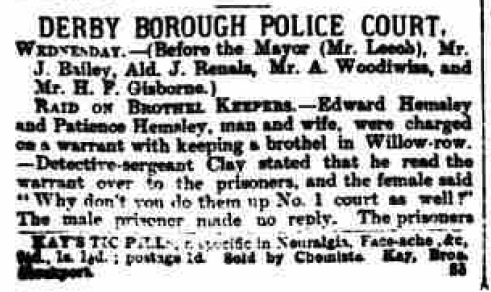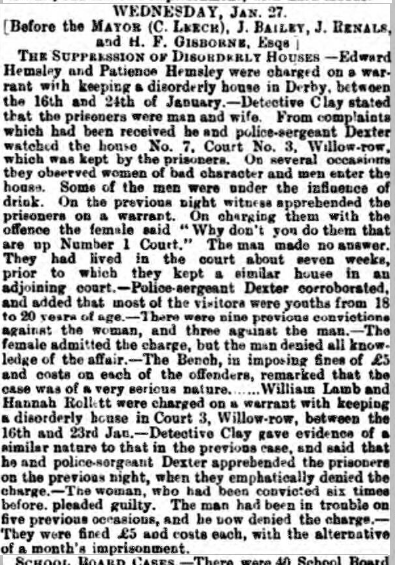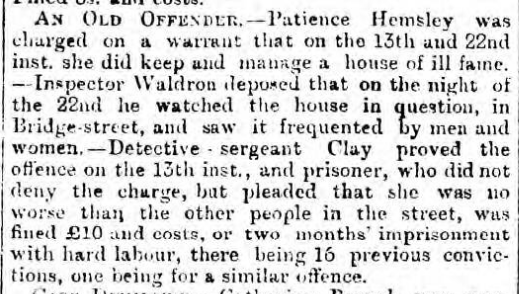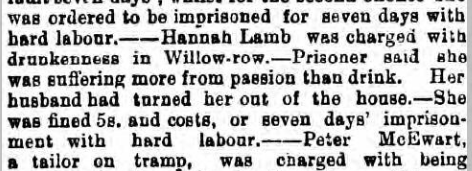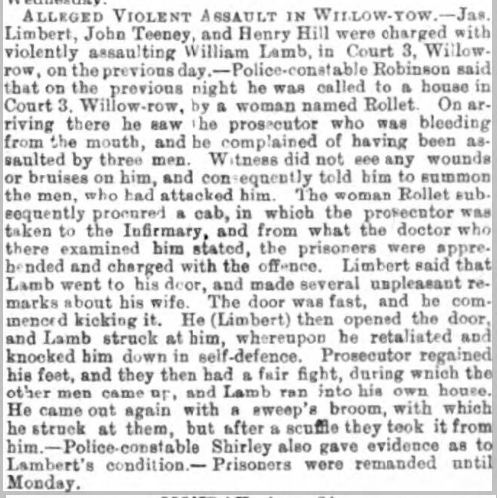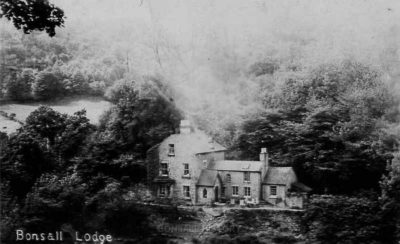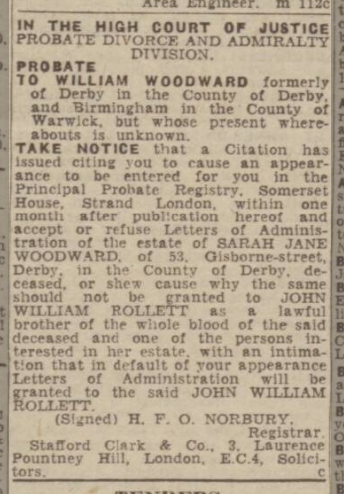Newspapers are ‘da bomb‘ for finding out information about relatives but it’s important to widen searches for different spellings, variations and even other family members. This time, searching just the name Rollett (it helps that it’s not too common), brought up an article I hadn’t seen before:

USING OBSCENE LANGUAGE – Hannah Rollett was charged with using obscene language in Walker lane, on Wednesday last, to the annoyance of Sarah Ann Rollett, and fined 40s. and costs, or, in default, one month with hard labour. -Ann Wright was charged with a similar offence in the Market place and Bold lane, to the annoyance of John Rollett, on Wednesday last, and fined 40s. and costs, or, in default, one month with hard labour.
Nottingham Journal, 20 March 1876, p4 c2
Typical of the Hannah I’d come to know and love, and interesting that it involved Alexander’s sister, Sarah Ann, again. But underneath, the next case also involved a Rollett and I was wondering if there was a connection when I noticed the name ‘Ann Wright’. I know that Hannah had a sister, Ann, who married a Wright in 1872. Could this be her? Were they all arguing together – siblings against siblings? And who was this John Rollett?
It was only a couple days later that a different search revealed more information:
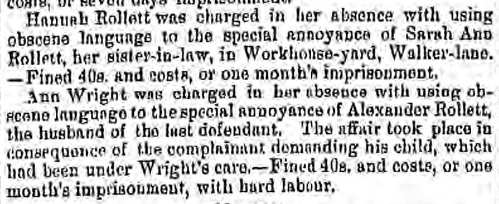
Hannah Rollett was charged in her absence with using obscene language to the special annoyance of Sarah Ann Rollett, her sister-in-law, in Workhouse-yard, Walker-lane. -Fined 40s. and costs, or one month’s imprisonment.
Ann Wright was charged in her absence with using obscene language to the special annoyance of Alexander Rollett, the husband of the last defendant. The affair took place in consequence of the complainant demanding his child, which had been under Wright’s care. -Fined 40s. and costs, or one month’s imprisonment, with hard labour.
Derby Mercury, 22 March 1876, p2 c5

The extra details indicate that this was indeed a ‘family affair’ so it’s more than likely this Ann Wright was in fact, Hannah’s sister. We know that her first daughter, Sarah Jane, was ‘under Wright’s care’ in 1881 where they appear in the census together. Sarah Jane would have been aged 4 at the time of this article but it could also refer to his son, Richard William who would have been nearly 2 years old. By 1881, ‘William’ was living with his father and his live-in-lover, Selina Banks. [Hannah was 3 months pregnant with John William at the time.]



It seems a bit rich that Alexander and his sister would take his wife and sister-in-law to court based on their language – they were hardly beacons of modesty. The move seemed designed to antagonise but it is hard to say who was in the right here as neither parent seemed like a great role model. A few months later, Alexander was involved in a ‘murderous assault on a policeman‘; the next year, Hannah committed her own ‘murderous attack‘; and a few years later, Hannah and Alexander would again argue over custody of their children which caused newspapers to report on their ‘Shocking Immorality’.



